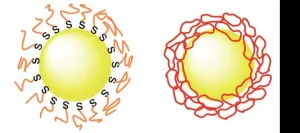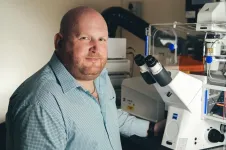(Press-News.org) It takes a lot to make a wooden table. Grow a tree, cut it down, transport it, mill it ... you get the point. It's a decades-long process. Luis Fernando Velásquez-García suggests a simpler solution: "If you want a table, then you should just grow a table."
Researchers in Velásquez-García's group have proposed a way to grow certain plant tissues, such as wood and fiber, in a lab. Still in its early stages, the idea is akin in some ways to cultured meat -- an opportunity to streamline the production of biomaterials. The team demonstrated the concept by growing structures made of wood-like cells from an initial sample of cells extracted from zinnia leaves.
While that's still a long way from growing a table, the work provides a possible starting point for novel approaches to biomaterials production that ease the environmental burden of forestry and agriculture. "The way we get these materials hasn't changed in centuries and is very inefficient," says Velásquez-García. "This is a real chance to bypass all that inefficiency."
The paper will be published in the Journal of Cleaner Production. Ashley Beckwith is lead author and a PhD student in mechanical engineering. Coauthors are Beckwith's co-advisors Velásquez-García, a principal scientist in MIT's Microsystems technology Laboratories, and Jeffrey Borenstein, a biomedical engineer at the Charles Stark Draper Laboratory.
Beckwith says she's always been fascinated by plants, and inspiration for this project struck when she recently spent time on a farm. She observed a number of inefficiencies inherent to agriculture -- some can be managed, like fertilizer draining off fields, while others are completely out of the farmer's control, like weather and seasonality. Plus, only a fraction of the harvested plant is actually used for food or materials production.
"That got me thinking: Can we be more strategic about what we're getting out of our process? Can we get more yield for our inputs?" Beckwith says. "I wanted to find a more efficient way to use land and resources so that we could let more arable areas remain wild, or to remain lower production but allow for greater biodiversity." So, she brought plant production into the lab.
The researchers grew wood-like plant tissue indoors, without soil or sunlight. They started with a zinnia plant, extracting live cells from its leaves. The team cultured the cells in a liquid growth medium, allowing them to metabolize and proliferate. Next, they transferred the cells into a gel and "tuned" them, explains Velásquez-García. "Plant cells are similar to stem cells in the sense that they can become anything if they are induced to."
The researchers coaxed the cells to grow a rigid, wood-like structure using a mix of two plant hormones called auxin and cytokinin. By varying the levels of these hormones in the gel, they controlled the cells' production of lignin, an organic polymer that lends wood its firmness. Beckwith says she assessed the cellular composition and structure of the final product using fluorescence microscopy. "You can visually evaluate which cells are becoming lignified, and you can measure enlargement and elongation of cells." This procedure demonstrated that plant cells can be used in a controlled production process, resulting in a material optimized for a particular purpose.
Velásquez-García sees this work as an extension of his lab's focus on microfabrication and additive manufacturing techniques like 3D printing. In this case, the plant cells themselves do the printing with the aid of the gel growth medium. Unlike an unstructured liquid medium, the gel acts as a scaffold for the cells to grow in a particular shape. "The idea is not only to tailor the properties of the material, but also to tailor the shape from conception," says Velásquez-García. Thus, he envisions the possibility of one day growing a table, no two-by-fours or wood glue necessary.
The technology is far from market-ready. "The question is whether the technology can scale and be competitive on an economic or lifecycle basis," says David Stern, a plant biologist at Cornell University who was not involved with the research. He adds that scaling up this approach "would take significant financial and intellectual investment," likely from both government and private sources. Stern also points to tradeoffs in bringing pieces of forestry and agriculture into the lab. "Agriculture uses the sun's energy through photosynthesis, and -- except in irrigated lands -- natural rainfall. It does not require buildings, heat, or artificial light."
The researchers acknowledge it's still early days for these lab-grown plant tissues -- the team will keep fine-tuning the controls, like hormone levels and pH of the gel, that give rise to the final material's properties. "It is really uncharted territory," says Velásquez-García. "One pending question is: How do we translate this success to other plant species? It would be naïve to think we can do the same thing for each species. Maybe they have different control knobs."
Beckwith also anticipates challenges in growing plant tissues at large scales, such as facilitating gas exchange to the cells. The team hopes to overcome these barriers through further experimentation and eventually build production blueprints for lab-grown products, from wood to fibers.
It's a radical yet elegant vision -- "a new paradigm," according to Borenstein. "There's an opportunity here to take advances in microfabrication and additive manufacturing technologies, and apply them to solve some really significant problems in the agriculture arena."
INFORMATION:
This research was funded, in part, by the Draper Fellow Program.
Written by Daniel Ackerman
Additional background
Paper: "Tunable plant-based biomaterials via in vitro cell culture using Zinnia elegans model"
https://www.sciencedirect.com/science/article/pii/S0959652620356171
Hokkaido University scientists have found a way to prevent gold nanoparticles from clumping, which could help towards their use as an anti-cancer therapy.
Attaching ring-shaped synthetic compounds to gold nanoparticles helps them retain their essential light-absorbing properties, Hokkaido University researchers report in the journal Nature Communications.
Metal nanoparticles have unique light-absorbing properties, making them interesting for a wide range of optical, electronic and biomedical applications. For example, if delivered to a tumour, they could react with applied light to kill cancerous tissue. A problem with this approach, though, is that they easily clump together in solution, losing their ability to absorb light. ...
Thirty-five people have died in the custody of U.S. Immigration and Customs Enforcement (ICE) since April 2018, with a seven-fold increase in deaths even as the average daily population decreased by nearly a third between 2019 and 2020, a new USC study shows.
"Potentially preventable causes of death -- including COVID-19 infection, influenza and suicide -- are responsible for at least half of recent deaths," said researcher Sophie Terp, an assistant professor of clinical emergency medicine at the Keck School of Medicine of USC and a clinical scholar at the USC Schaeffer Center for Health Policy and ...
Research from the University of Adelaide has found that some species of fish will have higher reproductive capacity because of larger sex organs, under the more acidic oceans of the future.
Published in PLOS Biology, the researchers say that far from the negative effects expected under the elevated CO2 levels in our oceans predicted for the end of the century, these fish capitalise on changes to the underwater ecosystems to produce more sperm and eggs. They also look after them better, enhancing the chances of reproductive success.
"The warming oceans absorb about one-third of the additional CO2 being released into the atmosphere from carbon emissions, causing the oceans to acidify," says lead author Professor Ivan Nagelkerken from the University's Environment ...
Dendritic cells are a vital component of the innate immune system, which constitutes the body's first line of defense against infectious agents and tumor cells. Their job is to activate the T-cell arm of the adaptive immune system, which confers specific and long-lasting protection against bacterial and viral infections. Dendritic cells engulf and degrade proteins that signal the presence of invasive pathogens. The resulting fragments (antigens) are displayed on their surfaces. T cells bearing the appropriate receptors are then activated to seek out and eliminate the pathogen. Newborns and young children ...
Packing a lunchbox with fruit, sandwiches, and snacks is common practice for most Australian families. But what if there was another way?
Flinders University researchers investigating the pros and cons of school-provided lunches say uniform delivery of lunchtime food at school could be a solution to better childhood nutrition and learning in Australia.
Flinders Caring Futures Institute deputy director Professor Rebecca Golley says universal school-provided lunch models - a common practice in other countries such as the UK - would involve all children in the ...
Scientists have for the first time established a sensory neuron model able to mass-reproduce two key sensory neuron types involved in pain sensation, enabling the easy generation of large numbers of the cells to fast-track chronic pain research.
In research applications usually sensory neurons need to be isolated from animals. They represent a wide variety of different cell types, making it difficult to collect and isolate large quantities of pain sensing neurons.
Using a new technique, researchers at Flinders University have found a way to reproduce millions of the cells, providing ample resources for the simultaneous testing of thousands of samples or potential drug libraries.
"Our ...
Education, professional skills and experience are the essential criteria for filling a position - or at least that is the expectation. The reality often looks different, as numerous studies have shown. When deciding whether to hire a candidate or not, gender, origin or ethnicity sometimes also play an important role; factors that say little about a candidate's suitability for a job.
This type of discrimination violates the principle of equal opportunities. For those affected, this may have long-term disadvantages, such as longer unemployment or lower wages. This is why it is crucial to understand who is discriminated against, and why. The study conducted by Dominik Hangartner (Public Policy Group), Daniel Kopp and Michael Siegenthaler (both KOF Swiss Economic Institute) ...
Autophagy is a fundamental cellular process by which cells capture and degrade their own dysfunctional or superfluous components for degradation and recycling. Recent research has revealed that phase separated droplets have a range of important functions in cells. An international collaboration between German, Norwegian, and Japanese researchers has unravelled the mechanisms underpinning both how these droplets are captured through autophagy, as well as how droplets can serve as a platform from which structures facilitating cytosolic autophagy arise.
Two worlds meet
Autophagy[1], a critical intracellular ...
Just like us, many insects need a decent night's sleep to function properly, but this might not be possible if they have been exposed to neonicotinoid insecticides, the most common form of insecticide used worldwide, suggests research by academics at the University of Bristol.
Two studies by scientists at Bristol's Schools of Physiology, Pharmacology and Neuroscience and Biological Sciences have shown these insecticides affect the amount of sleep taken by both bumblebees and fruit flies, which may help us understand why insect pollinators are vanishing from the wild.
Dr Kiah Tasman, Teaching Associate in the School of Physiology, ...
Just over 200,000 Americans suffer from systemic lupus erythematosus, or SLE, a condition in which the body's immune system mistakenly attacks its own healthy tissues, especially joints and skin, a new study shows.
Led by a researcher at NYU Grossman School of the Medicine, the study provides the first national estimate of how widespread the autoimmune disease is since the U.S. Centers for Disease Control and Prevention (CDC) set up a half dozen state registries to track the illness more than a decade ago. SLE affects mostly women, can be fatal, and often involves debilitating flare-ups of fatigue and pain that keep nearly ...




